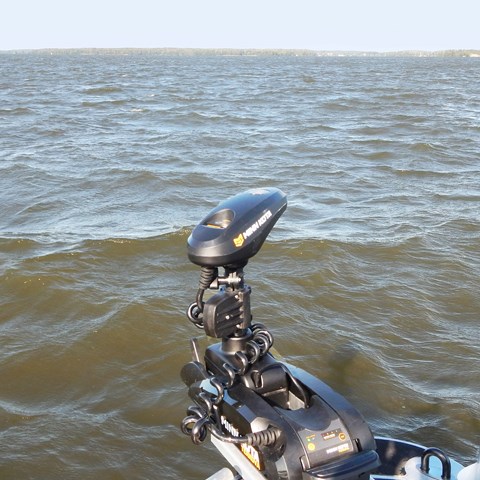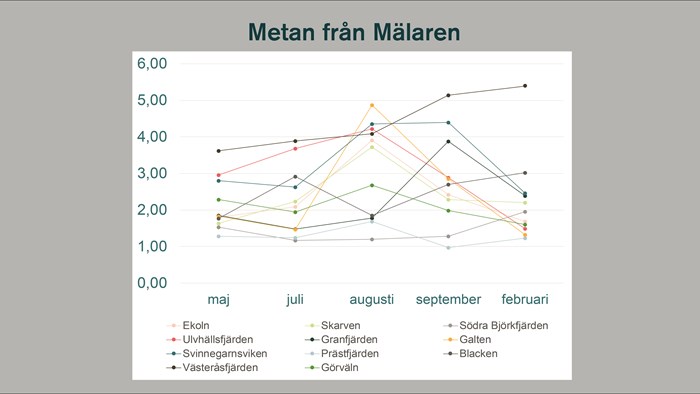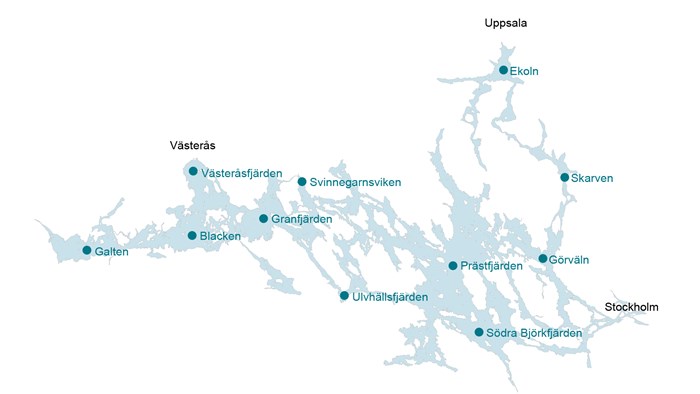Methane is a powerful greenhouse gas that is much more efficient than carbon dioxide at warming the atmosphere. Therefore, methane emissions contribute disproportionately to climatic warming, and emissions are of concern, especially since methane levels in the atmosphere are continuously increasing.
Methane is produced by microbes that live in wet places including lake sediments, and the gas is therefore emitted from waterbodies. As lakes in Sweden cover about 9 percent of the country, the methane emissions from lakes are important for people in general, but are also relevant for the climate objectives pursued by governments worldwide. Colleagues at the Department for Aquatic Sciences and Assessment, Joel Segersten, Martyn Futter, and Mike Peacock contributed to the study of methane emissions from Mälaren.
Levels of emissions vary with lake size
Methane emissions are studied from many different perspectives. To date, very little research has been made on emissions from large lakes (with areas over 500 km2) and no detailed studies of large lakes have taken place in Europe. This lack of research and data creates uncertainty and raises questions about the correctness of global methane budgets.
- This study adds to our understanding of methane emissions in large waterbodies, says Mike. The larger the lake, the less connection to land, so the bigger the surface area, the lower the methane emissions. That relationship carries on all the way down to ponds that have more methane than most other waterbodies.
Spatial variations
The processes that drive methane emissions are complex and vary with more than just the lake’s surface area. Higher concentrations of methane are often associated with shallower waters.
- The level of methane is higher in shallow waters which tend to be nearer the edges of the lake, where wastewater from urban areas and fertiliser runoff from agricultural land enters the lake. The nutrients in wastewater and runoff act as food for microbes that produce methane which increases the amount produced. Additionally, in shallow waters there is less chance for other microbes that live in the water column to “eat” the methane before it arrives at the lake surface.
In Mälaren, the shallower basins are situated to the west. Not surprisingly, the study shows a higher concentration of methane here.
Seasonal variations
Eleven stations were sampled five times to cover seasonal variation. Warmer temperatures allow the microbes to thrive which increases methane production. The study shows a seasonal variation in emissions with the highest values observed during summer. A conclusion drawn from this for the future is that methane emissions could increase due to a warmer climate. Mike comments:
- Although our study shows that methane emissions tend to be greater during summer, we also found high methane levels during winter at one sampling station. We’re unsure what caused this – perhaps it was high levels of rain during a mild, ice-free winter – but it shows that we need to measure methane during the winter months too.
Samples were taken in connection with the environmental monitoring program
The study was conducted in connection with the Mälaren environmental monitoring program. This gave added value to the study, because the Mälaren environmental monitoring program measures so many other parameters across the lake: nutrients, metals, oxygen concentrations and algae. The high quality data place methane measurements into an important context, considering the past shortage of methane studies on large lakes.


